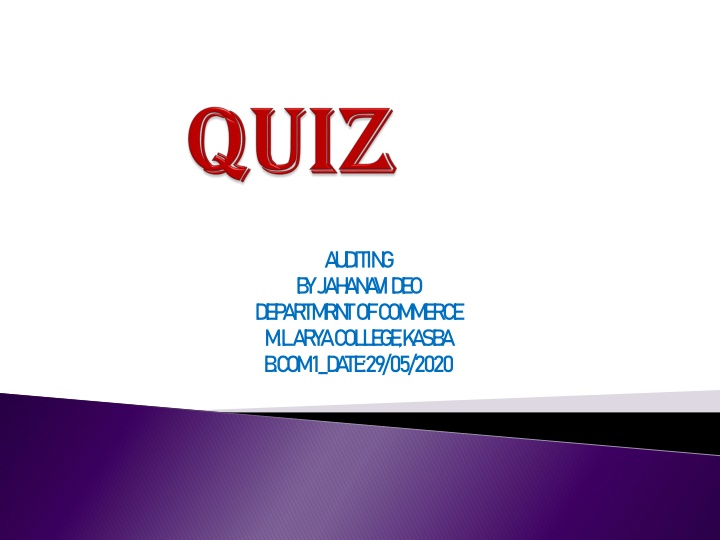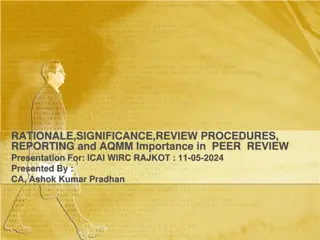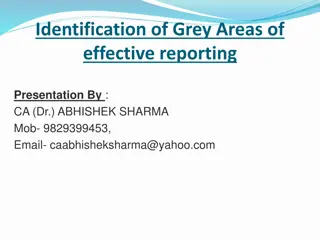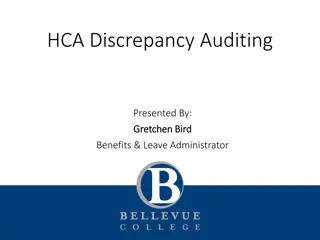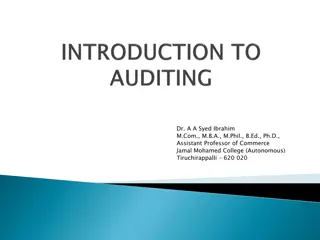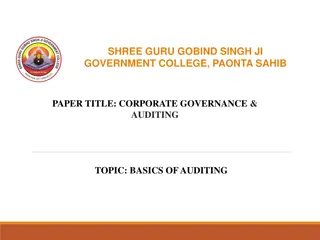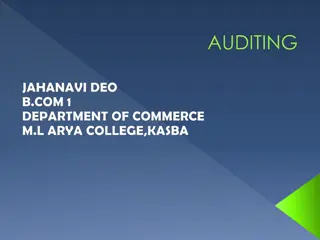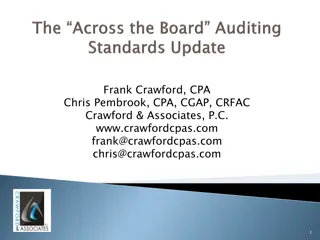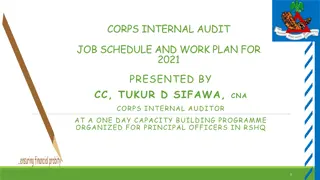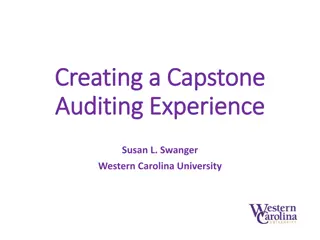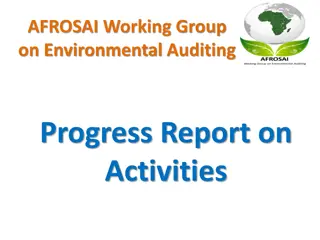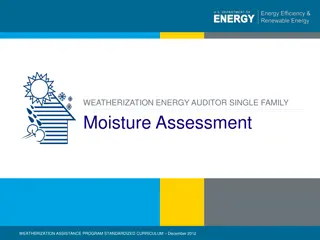Introduction to Auditing By Jahanavi
Auditing is a vital process in business and financial management that involves verifying, examining, and evaluating financial records to ensure accuracy and compliance. This content discusses the basics of auditing, including its objectives, necessity for different types of companies, and key concepts such as internal audit and propriety audit.
Download Presentation

Please find below an Image/Link to download the presentation.
The content on the website is provided AS IS for your information and personal use only. It may not be sold, licensed, or shared on other websites without obtaining consent from the author.If you encounter any issues during the download, it is possible that the publisher has removed the file from their server.
You are allowed to download the files provided on this website for personal or commercial use, subject to the condition that they are used lawfully. All files are the property of their respective owners.
The content on the website is provided AS IS for your information and personal use only. It may not be sold, licensed, or shared on other websites without obtaining consent from the author.
E N D
Presentation Transcript
A U D ITIN G B Y JA H A N A VI D E O D E P A RTM RN T OF COM M E R CE M .L A RYA C OL L E G E ,K A SB A B .COM 1_D A TE :29/05/2020
1.Auditing refers to a) Preparation and checking of account b) Examination of accounts of business units only c) Examination of accounts of professional accountants d) Checking of vouchers NOTE- ANSWERS OF THE MCQS ARE GIVEN IN THE LAST SLIDE.
2. Main object of auditing is a)Detection of errors b) To find out whether P&L a/c & B/S show true and fair state affairs c) Detection of frauds d) Detection and prevention of frauds and errors.
3. Auditing is luxury for a a)Joint stock company b) Partnership firm c) Small shop-keeper d) Government company
4. Auditing is compulsory for a) Small scale business enterprises b) All partnership firms c) All joint stock companies d) All proprietary concerns
5. Propriety audit refers to a) Verification of accounts b) Examination accounts of propriety concerns c) Enquiry against justification and necessity of expresses d) Audit of Govt. companies
6. Internal audit means a) Audit undertaken to ascertain truth and fairness of state of affairs b) Audit undertaken internally to evaluate management functions c) Audit undertaken by employees of the organization to check financial irregularities d) Audit by independent auditor to improve internal affairs
7. Internal audit is a) Compulsory for a company with paid-up capital of Rs. 25 lakhs and above b) Voluntary for a company c) Not necessary for a company d) Necessary for a company
8. Internal audit is undertaken a) By independent auditor b) Statutorily appointed auditor c) By a person appointed by the management d) By Government auditor
9. Internal auditor is appointed by the a) Management b) Shareholders c) Government d) C & A-G
10. The object of internal check is to a)Control wastage of resources b) Prevent errors and frauds c) Verify the cash receipts and payments d) Facilitate quick decision by the management
11. Test checking refers to a)Testing of accounting records b) Testing of honesty of employees c) Intensive checking of a selected number of transactions d) Checking of all transactions recorded
12. Test checking should not be applied to a)Sales book b) Purchase book c) Bank reconciliation statement d) Bills book
13. Vouching implies a)Inspection of receipts b) Examination of vouchers to check authenticity of records c) Surprise checking of accounting records d) Examining the various assets
14. Payment for goods purchased should be vouched with the help of a)Creditors statement b) Correspondence with suppliers c) Cash memos d) Ledger accounts
15. Receipt from debtors should be vouched with the help of a)Counterfoil Receipts cash book b) Suppliers statement c) Sales Deeds d) General Ledge
16. Verification refers to a)Examination of journal and ledger b) Examination of vouchers related to assets c) Examining the physical existence and valuation of assets d) Calculation of value of assets
17. Object of verification of assets a) Physical verification of assets b) Checking value of assets c) Examining the authority of their acquisition d) All of the above
18. Which of the following statements is correct? a) Valuation is a part of verification b) Verification is a part of valuation c) Valuation has nothing to do with verification d) Auditor is a valuer
19. Stock should be valued at a) Cost b) Market price c) Cost price or market price whichever is lower d) Cost less depreciation
20. Valuation of Fixed Assets is based on the concept a) Going concern b) Conservation c) Money measurement d) Dual aspect
21. Auditor is not valuer was stated in a) Kingston Cotton Mills case b) London & General Bank case c) Lee . V . Neuchatel Co. Ltd case d) London oil Storage Co. case
1. C 12.C 2. B 13.B 3. C 14.A 4. C 15.A 5. C 16.C 6. C 17.D 7. B 18.A 8. C 19.C 9. A 20.A 10. B 21.A 11.C
